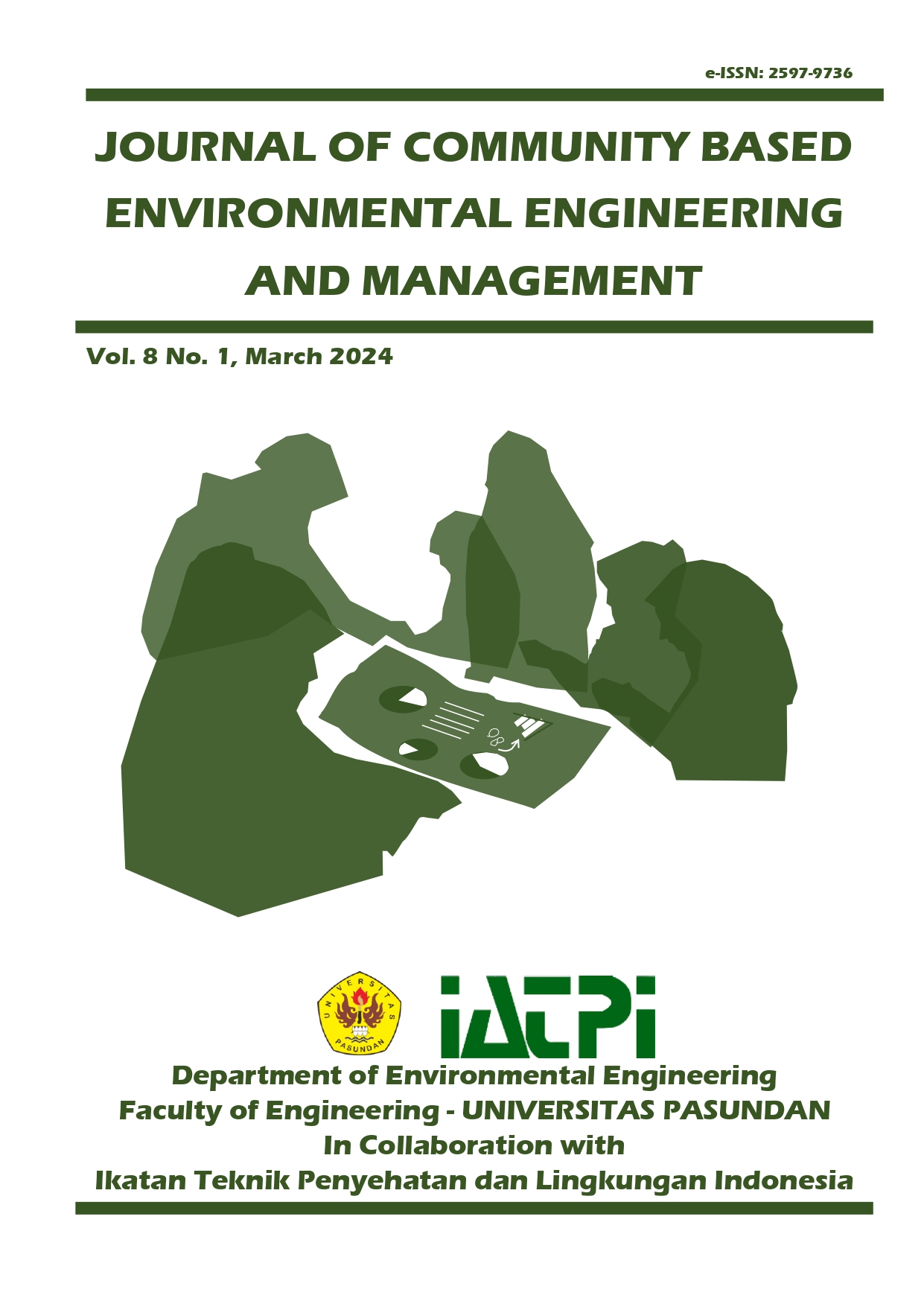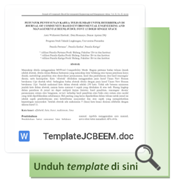Analyzing Spatial Groundwater Salinity Using Multivariate Analysis and Multiple Linear Regression Models
DOI:
https://doi.org/10.23969/jcbeem.v8i1.12708Keywords:
model, salinity, shallow groundwater, electrical conductivity, total dissolved solidAbstract
The increase in the amount of groundwater withdrawal will inevitably pose a threat of seawater intrusion. The purpose of this research was to identify the distribution of shallow groundwater salinity in North Jakarta, West Jakarta and Central Jakarta and to develop a regional model of shallow groundwater salinity distribution. The data used in this study was that of the groundwater quality monitoring, obtained from the Regional Environment Status Book (SLHD), published by The Environment office of Greater Jakarta released in 2022, involving a total of 121 sample points in North Jakarta, West Jakarta, and Central Jakarta. The primary data was taken at 6 (six) sampling locations for model validation purposes. The study began with data grouping, using the Hierarchical Cluster Analysis (HCA) method. The results of identifying the highest distribution of salinity are in cluster 3 (three). A model was subsequently developed, after removing the outliers, with multiple linear analysis methods using the variable the distance from the coastline (X1), well depth (X2) and hardness (X3), to determine the influence of EC, TDS and salinity distribution in shallow groundwater. The results obtained are as follows; EC Models: YEC3 = -1.879+ (1.19.X1) + (5.08.X3). TDS models: YTDS3 = -2.211.30 + (0.81.X1) + (101.41.X2) + (4.07.X3). Salinity models: Ysalinity3 = -0.07+ (6.75×10-5.X1) + (2.4×10-4.X3). Model verification results for R2EC3 = 0.70; R2TDS3 = 0.92; R2salinity3 = 0.88. Validation results produce 21.14% for EC, 8.21% for TDS, and 22.87% for Salinity. This needs further research by increasing the number of primary samples.
Downloads
References
Davis M. L. & Cornwell, D. A. (2008). Introduction to Environmental Engineering (fourth ed., pp. 8–9). McGraw Hill.
Gurmessa, S. K., MacAllister, D. J., White, D., Ourdraog, I., Lapworth, D., & MacDonald, A. (2022). Assessing groundwater salinity across Africa. Science of the Total Environment, 828, 154283. https://doi.org/10.1016/j.scitotenv.2022.154283
Kagabu, M., Delinom, R. M., Lubis, R. F., Shimada, J., & Taniguchi, M. (2010). Groundwater Characteristics in Jakarta Area, Indonesia. Jurnal RISET Geologi Dan Pertambangan, 20(2), 69. https://doi.org/10.14203/risetgeotam2010.v20.35
Parisi, A., Alfio, M. R., Balacco, G., Güler, C., & Fidelibus, M. D. (2023). Analyzing spatial and temporal evolution of groundwater salinization through Multivariate Statistical Analysis and Hydrogeochemical Facies Evolution-Diagram. Science of the Total Environment, 862(December 2022). https://doi.org/10.1016/j.scitotenv.2022.160697
Persaud, E., & Levison, J. (2021). Impacts of changing watershed conditions in the assessment of future groundwater contamination risk. Journal of Hydrology, 603(PD), 127142. https://doi.org/10.1016/j.jhydrol.2021.127142
Setiawan, I., Morgan, L., Doscher, C., Ng, K., & Bosserelle, A. (2022). Mapping shallow groundwater salinity in a coastal urban setting to assess exposure of municipal assets. Journal of Hydrology: Regional Studies, 40, 100999. https://doi.org/10.1016/j.ejrh.2022.100999
Setiawan, T., Yermia, E., Purnomo, B. J., & Tirtomihardjo, H. (2017). Intrusi Air Laut Pada Sistem Akuifer Tertekan Cekungan Air Tanah Jakarta Berdasarkan Analisis Hidrokimia Dan Hidroisotop. RISET Geologi Dan Pertambangan, 27(1), 1. https://doi.org/10.14203/risetgeotam2017.v27.430
Wali, S. U., Alias, N. B., Harun, S. Bin, Umar, K. J., Gada, M. A., Dankani, I. M., Kaoje, I. U., & Usman, A. A. (2022). Water quality indices and multivariate statistical analysis of urban groundwater in semi-arid Sokoto Basin, Northwestern Nigeria. Groundwater for Sustainable Development, 18(August 2021), 100779. https://doi.org/10.1016/j.gsd.2022.100779














